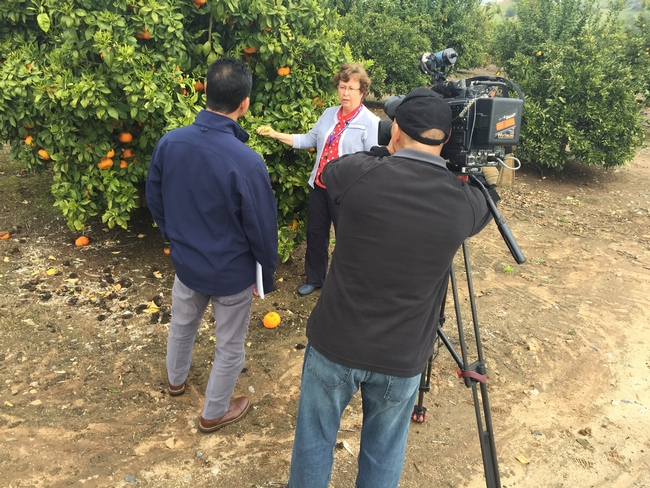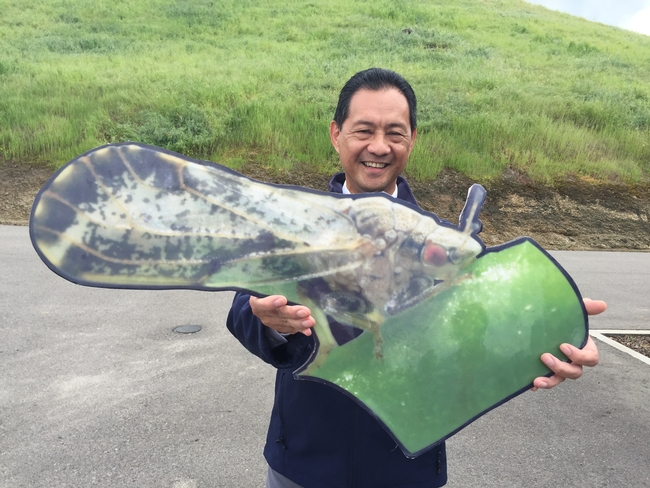
"Basically, you just look really closely (at new growth) with any kind of magnifying device you have to see if you can find any insects on there," Grafton-Cardwell said.
If tiny yellow eggs, sesame seed-sized nymphs, or ACP adults are found, take action. Maps, treatment protocols and other information that detail what to do when ACP is present are available at http://ucanr.edu/acp.
Since ACP can spread the devastating citrus disease huanglongbing (HLB), controlling the insect population will buy time for researchers working around the world to find a way to grow healthy and delicious citrus fruit in the presence of HLB.
Yurong reported that the disease has been found in a dozen Southern California trees. Grafton-Cardwell figures Valley trees will ultimately get infected.

Reed Fujii of the Stockton Record interviewed Karey Windbiel-Rojas, a UCCE advisor for home and garden integrated pest management, for a story on Asian citrus pysllid.
“It's really important to detect Asian citrus psyllid in backyard trees because one psyllid can carry the disease from tree to tree in a residential landscape,” Windbiel-Rojas. “Citrus growers, they treat all their fields, but home gardeners don't necessarily treat or monitor their backyard trees so it can spread a lot faster in backyards than in managed citrus orchards.”
Stories about the call to check trees this spring for Asian citrus psyllid also appeared in:
- El Informador del Valle
- The Porterville Recorder
- Monterey County Herald
- Turlock Journal
- Santa Cruz Sentinel
- Morning Ag Clips
- Hoy, a Los Angeles Times Spanish language publication
- Valley Public Radio, Fresno
- AgNewsWest newsletter
- California Department of Food and Agriculture Planting Seeds Blog
- Inland News Today, Riverside
- East County Magazine, San Diego
- Highland Community News, Highland
- Central Valley Business Times, Fresno
- KXO Radio, Imperial
- AgNetWest.com, California
- UC Office of the President News Page, Oakland
View a four-minute video about Asian citrus psyllid here: